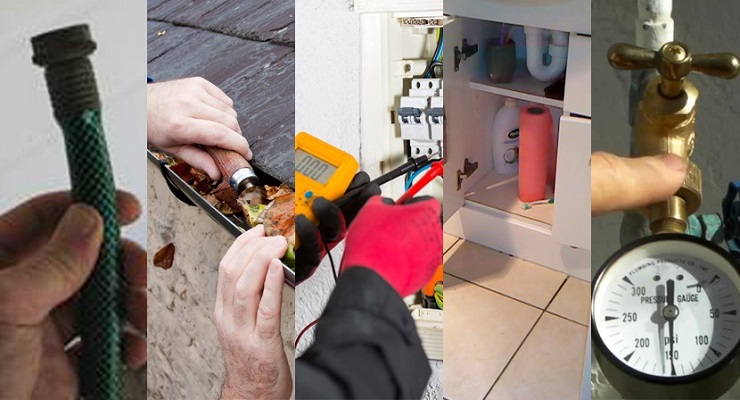While none of us can actually predict the weather, many indicators point to a super ‘El Nino’ rain/snow season for California for this winter. November usually marks the beginning of the rainy season, but a storm season could begin as early as October or sooner. This means that September is a critical month for El Nino Storm Disaster Preparedness.
Here are some basic steps to take to be prepared:
1. Maintain minimum allowable watering practices to keep current vegetation anchored and healthy.
2. Clean and keep clean all building roofs, gutters, and downspouts by removing leaves, branches and other debris that may impede water movement.
3. Remove all dead and decaying trees and plants from your property to prevent tree collapse onto cars and buildings during a severe windy storm.
4. Install rain barrels, water capture cisterns and bio swales that can help retain water on site for re-use or to replenish local groundwater.
5. Anchor current dirt/soil surfaces with mulch and screening to prevent soil erosion, mudslides, and dramatic land movement.
6. Purchase and have ready sand bags to prevent flooding into buildings, stables, and carports, especially those which are situated below street grade level.
7. Know your local CERT (Community Emergency Response Team) representatives and be on their text alert radar in order to receive important storm condition messages.
During a major storm event, don’t forget to:
1. Stay inside with your family and pets and avoid being out in the storm unless absolutely necessary. Be sure you have plenty of food, water and batteries/flashlights/candles in the event of a sustained power outage. That includes a battery-operated charger for your cellphone!
2. If you must go out during the storm, drive slowly and defensively to prevent hydroplaning.
3. STAY AWAY FROM RIVERS, CHANNELS, AND DEBRIS BASINS where fast-moving water can prove fatal to you and your pets. This means not trying to ‘beat’ the river by driving across a flooded street and staying away from high ground next to these areas in order to watch the flashy flooding, as this land can quickly give way to an unexpected landslide if oversaturated by water.
4. Stay out of the way of emergency vehicles responding to distress.
5. Keep emergency supplies in your cars or vehicles, including water, batteries, blankets, cellphone chargers and a first aid kit in the event that a fast-moving storm overtakes you and strands you away from home. It is difficult to predict how soon you might receive emergency services.
6. Stay inside buildings during thunder and lightning storms and stay away from trees, tall towers and electrical lines if you are stranded outdoors during this type of storm.
7. Resist the urge to head towards the mountains for skiing as soon as the first heavy storm arrives, since chains will be required and you may be prevented from reaching the slopes due to the great danger of landslides due to soil erosion because of our extended drought.
8. When in doubt about safety, DON’T take a chance.









